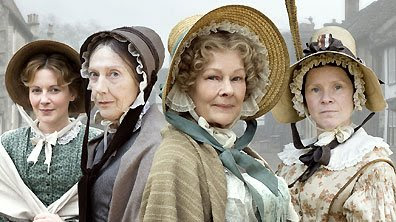 I love new books: the pristine covers, unbroken spines, the sense of anticipation, especially when a friend’s name adorns the cover. But I also love old books, whether novels or reference. I have a bunch at home and regularly check more of them out of the local university library. I’ve found that newer books, while they may contain new information and insights, don’t always have the period focus I like. For instance, I recently found a Victorian history of ballooning which covers the Regency period in much more detail than most modern books on the subject have space for.
I love new books: the pristine covers, unbroken spines, the sense of anticipation, especially when a friend’s name adorns the cover. But I also love old books, whether novels or reference. I have a bunch at home and regularly check more of them out of the local university library. I’ve found that newer books, while they may contain new information and insights, don’t always have the period focus I like. For instance, I recently found a Victorian history of ballooning which covers the Regency period in much more detail than most modern books on the subject have space for.
 I also love old books for less logical reasons. I love their embossed covers, their yellowed pages, the titles that seem to go on and on. I love the fonts, even the ones in which s’s look like f’s. I even love how they smell. They make me wonder where they’ve been and who read them before me.
I also love old books for less logical reasons. I love their embossed covers, their yellowed pages, the titles that seem to go on and on. I love the fonts, even the ones in which s’s look like f’s. I even love how they smell. They make me wonder where they’ve been and who read them before me.
And a new love is Google Books. Being a certifiable history geek, I am delighted to find treasures that would otherwise remain semi-hidden in special collections in places I don’t have the time or money to visit regularly. Even though I miss the smell and feel, I love to find obscure gems like: 
Commentaries on the Surgery of the War in Portugal, Spain, France and the Netherlands, from the Battle of Rolica, in 1806, to that of Waterloo, in 1815, by G. J. Guthrie, 1855. Full of details on how military heroes and their compatriots could have been wounded and what could have been done for them. Gory but useful.
 An Account of Five Aerial Voyages in Scotland by Vincent Lunardi, 1786. It’s full of the period ballooning details I need. Lunardi seems to have been quite the charmer:
An Account of Five Aerial Voyages in Scotland by Vincent Lunardi, 1786. It’s full of the period ballooning details I need. Lunardi seems to have been quite the charmer:
“In going to the Baronet’s we had to cross over the bridge at Glassart, where about thirty young blooming lasses had ranged themselves on each side to have a sight of this comely Adventurer. All of them appeared well pleased: there was one, however, not the least lovely of the number, whose sensibility led her to express herself more strongly than the rest: ‘How pretty he is! I wish I had been with him.’ Mr. Lunardi was too attentive to let slip an opportunity to say a civil thing to our fair Countrywoman: he patted her cheek, whispering, ‘My Angel, and so do I.'”
How about you? Do you love old books, too? Have you found any obscure gems on Google books or elsewhere? Please share!
Elena
www.elenagreene.com












